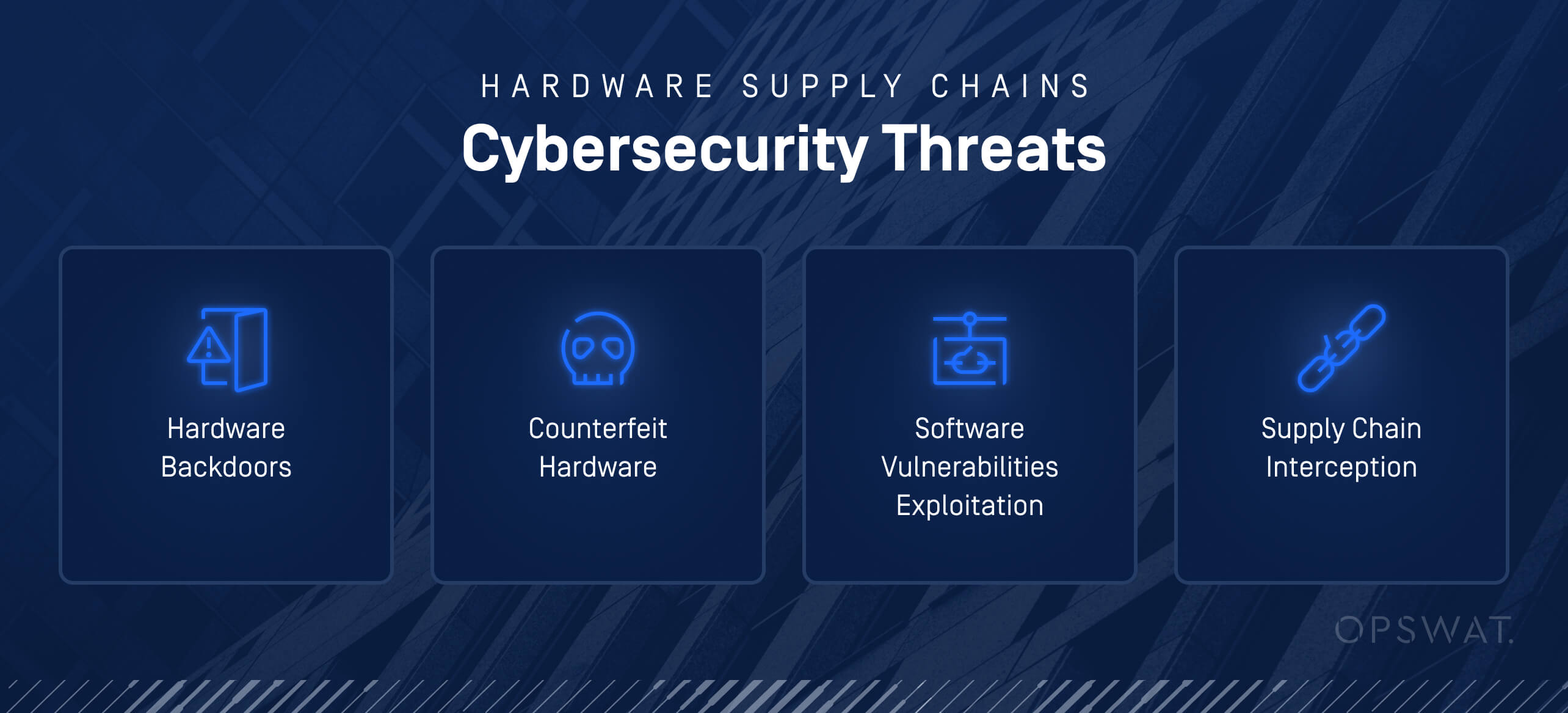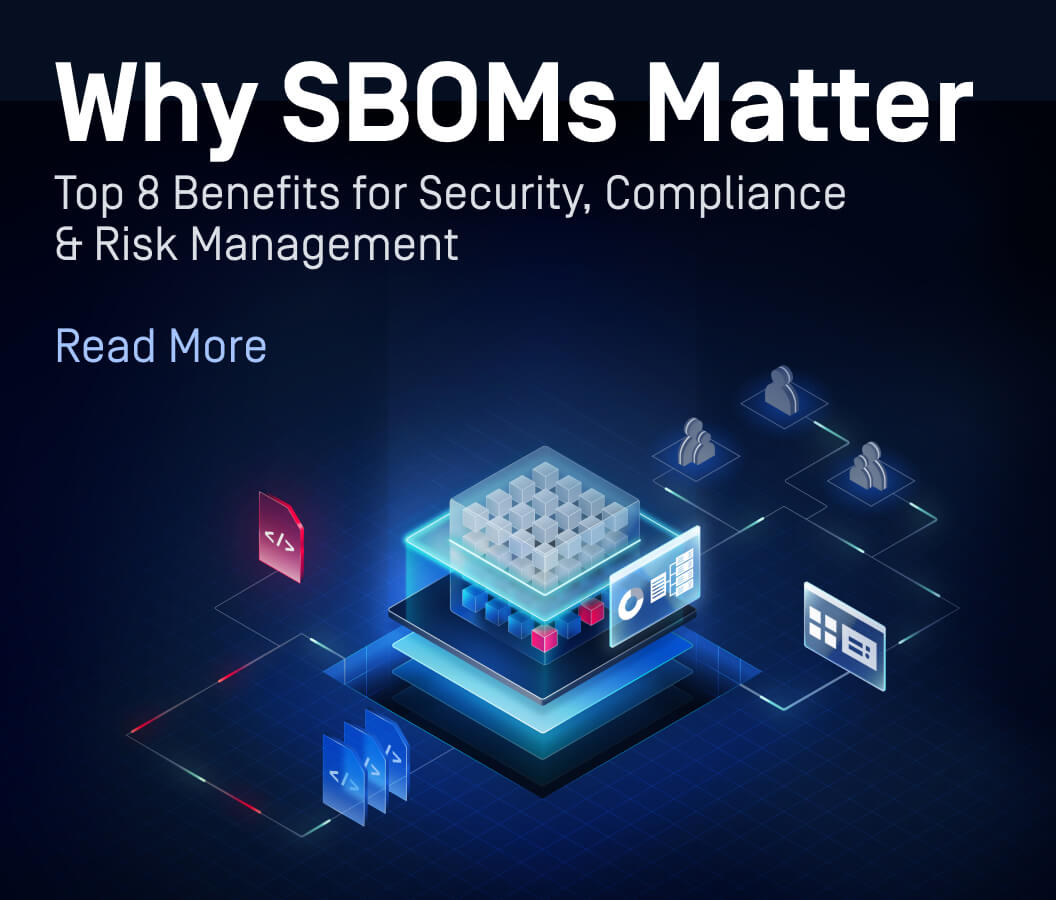- Understanding the Hardware Supply Chain Risks
- Cybersecurity Threats in Hardware Supply Chains
- Regulatory Compliance Challenges
- Key Components of Hardware Supply Chain Security
- Implementing a Zero Trust Security Model
- The Role of Trusted Computing in Supply Chain Security
- Best Practices for Securing the Hardware Supply Chain
- Future Trends in Hardware Supply Chain Security
- Conclusion
- FAQs
Modern hardware supply chains are multi-layered and globalized, involving numerous suppliers, manufacturers, and logistics vendors. For instance, each of the design, raw material sourcing, manufacturing, and assembly stages of a single piece of hardware can take place in a different country. The nature of modern supply chains makes them increasingly vulnerable to a wide range of cyberthreats, which can disrupt the integrity and availability of critical hardware.
The increased risk of cyberattacks on supply chains requires the implementation of strict cybersecurity regulations. Developing, enforcing, and ensuring compliance with security regulations comes with significant challenges and requires extensive collaboration between governments and industry stakeholders.
Understanding the Hardware Supply Chain Risks
The hardware supply chain is difficult to secure due to the number of layers and organizations involved. The unavoidable reliance on global suppliers increases the exposure to vulnerabilities, particularly when components are sourced from regions with low cybersecurity or regulatory controls.

Cybersecurity Threats in Hardware Supply Chains
The impact of cyberattacks on hardware supply chains can lead to critical data breaches, operational disruptions, and financial losses. Even in the event of a cyberattack causing little to no damage, exploiting such vulnerabilities can still lead to a loss of trust and damage market confidence.
Adversaries can employ various methods to exploit vulnerabilities in hardware supply chains:
- Hardware Backdoors: Used to gain unauthorized access and can be implanted within hardware components
- Counterfeit Hardware: Can be difficult to distinguish from legitimate products with performance issues and security vulnerabilities
- Software Vulnerabilities Exploitation: Could be firmware or software vulnerabilities that grant unauthorized access
- Supply Chain Interception: Gaining physical access to shipments enables adversaries to modify the hardware
Regulatory Compliance Challenges
Regulatory compliance ensures mitigating various risks besides legal penalties, such as loss of market access and reputational damage. Hardware supply chains span across multiple jurisdictions that impose complex regulatory requirements, bringing various challenges to maintaining compliance.
Some of the common regulatory frameworks are the U.S. Cybersecurity Executive Order (EO 14028), National Institute of Standards and Technology (NIST) framework, and European Union Cyber Resilience Act (CRA).
Key Components of Hardware Supply Chain Security
Access Control and Monitoring
Ensuring that only authorized entities gain access to critical components and systems requires implementing various effective strategies and technologies:
- RBAC (Role-Based Access Control): To minimize the risk of unauthorized modifications
- MFA (Multi-Factor Authentication): Adds a new layer of security to prevent unauthorized access
- Hardware Authentication: By utilizing cryptographic methods, such as Trusted Platform Modules (TPM)
- Zero Trust Security Model: To enable granular access and enforce continuous verification
- Physical Security Measures: Such as biometric authentication and surveillance systems
Threat Intelligence
Threat intelligence enables organizations to predict and identify emerging threats, proactively mitigate risks, and enhance decision-making. Leveraging real-time data and predictive analytics contributes to identifying potential risks before they impact the supply chain. SIEM (Security Information and Event Management) systems, TIPs (Threat Intelligence Platforms), AI and machine learning, and dark web monitoring are some of the technologies and practices that can be employed within hardware supply chains to enhance threat intelligence.
Implementing a Zero Trust Security Model
Zero Trust is a modern cybersecurity approach that offers more adaptability to the complexities of modern technology environments. ZTNA (zero trust network access) is a solution designed to address traditional VPN networks' performance issues and limitations, and reduce the attack surface in case of a breach.
Principles of Zero Trust
Zero Trust is built on three main principles:
- Verify Explicitly: Always authenticate users, devices, and applications.
- Principle of Least Privilege: Restrict access to the necessary level.
- Assume Breach Mentality: Expect that a breach will occur, implementing mitigation and response strategies.
Zero Trust in Practice
Some key applications of Zero Trust include implementing access controls and continuous monitoring for external suppliers, performing regular data encryption and integrity checks, and enforcing MFA with least privilege access.
Adopting Zero Trust networks in hardware supply chain environments can be challenging, especially with the presence of multiple suppliers and with the existence of deployed legacy systems. It also requires considerable costs since the initial deployment can be resource intensive.
The Role of Trusted Computing in Supply Chain Security
Trusted Computing employs cryptographic techniques to enhance the integrity and security of computing systems. Methods like TPMs (Trusted Platform Modules) and secure boot processes ensure that only verified and authorized software runs on a system.
Trusted Platform Module (TPM)
A TPM is a specialized hardware security chip designed to provide cryptographic functions to enhance the security of computing devices. Utilizing TPMs helps secure hardware components by generating and managing cryptographic keys to prevent unauthorized access, verifying platform integrity at boot time, and full-data encryption. It can also enable remote verification of a device’s trustworthiness.
TPM technology can be included within applications in the hardware supply chain, such as component authentication, tamper detection, and firmware protection.
Secure Boot Processes
Secure Boot mechanism prevents unauthorized software from being executed during system startup by verifying the encrypted digital signatures of firmware and system bootloaders. Such a mechanism helps prevent rootkit and bootkit malware infections.
Implementing Secure Boot enhances hardware supply chain security by ensuring components' authenticity throughout transportation and deployment. Secure Boot can be used along with TPM to provide multi-layered hardware security.
Best Practices for Securing the Hardware Supply Chain
Securing the modern, multi-layered hardware supply chain requires incorporating multiple approaches and strategies to integrate cybersecurity best practices with physical security controls.
Actionable Security Steps
- Supplier risk assessment
- Regular firmware and software integrity checks
- Zero Trust security model implementation
- Strict physical security for the manufacturing processes
- Threat intelligence sharing
- Regular employee cybersecurity awareness training
Such actionable steps may not be enough. Performing regular security audits is essential to maintain the integrity and security of hardware supply chains, ensure adherence to the latest industry regulations, help address vulnerabilities before they can be exploited by malicious actors, and regularly assess third-party vendors’ security measures.
Collaboration and Partnerships
With the increase in cyberthreat complexities, collaboration between industry stakeholders, government agencies, and cybersecurity experts is necessary. Effective partnerships bring significant benefits, such as knowledge sharing to stay ahead of emerging threats, standardizing security practices, and implementing rapid incident response measures. To support such partnerships, ISACs (Information Sharing and Analysis Centers) were formed to facilitate collaboration between the private sector and the U.S. government for threat intelligence sharing.
Future Trends in Hardware Supply Chain Security
AI and Machine Learning
AI applications are increasingly integrated within the operations of many industries. For hardware supply chains, adopting AI and machine learning applications can enhance threat detection with real-time anomaly detection, AI-driven threat prediction, and automated incident responses. They can also improve supplier risk analysis by evaluating specific suppliers’ security practices and identifying weaknesses within their supply chains.
Blockchain and Internet of Things (IoT)
Blockchain technology adds to the supply chain transparency by ensuring secure, immutable records of transactions. The emerging decentralized blockchain applications help prevent unauthorized modifications to the supply chain records and improve record traceability.
The use of IoT devices, such as GPS trackers and RFID Tags, in supply chains enhances performance and productivity. However, these devices introduce security risks that must be addressed. For instance, unpatched firmware vulnerabilities and unsecured endpoints are some of the common attack pathways for IoT devices. Blockchain-enabled IoT devices can overcome many security challenges by adding transparency to verify device identities and maintain data integrity.
Conclusion
Hardware supply chains are complex and multi-layered. The variety of cyberattack pathways and the global nature of hardware supply chains increase the security challenges and the difficulties of achieving regulatory compliance.
OPSWAT offers integrated solutions to secure hardware supply chains against advanced cyberthreats. MetaDefender Drive™ helps secure transient devices with its ability to detect hidden malware, such as rootkit and bootkit. With multiple scanning engines, it can achieve up to 89.2% malware detection rates.
To know more about OPSWAT’s solutions to secure critical infrastructure and mitigate the risks of hardware supply chain cyberattacks, talk to one of our experts today.
FAQs
Why are hardware supply chains vulnerable to cyberattacks?
Modern hardware supply chains are multi-layered and global, involving numerous vendors across countries. This complexity increases exposure to cybersecurity threats, especially when components are sourced from regions with limited regulatory oversight. Attackers can exploit vulnerabilities at any point in the supply chain, affecting the integrity and availability of critical hardware.
What types of cybersecurity threats target hardware supply chains?
Common cyber threats in hardware supply chains include:
Hardware backdoors: Embedded access mechanisms used for unauthorized control
Counterfeit hardware: Inauthentic components with performance and security flaws
Software and firmware vulnerabilities: Exploited for unauthorized system access
Supply chain interception: Physical tampering with devices during transit
What are the regulatory compliance challenges in hardware supply chains?
Hardware supply chains span multiple jurisdictions, making compliance complex. Regulatory frameworks like the U.S. Cybersecurity Executive Order (EO 14028), NIST, and the EU Cyber Resilience Act (CRA) impose various requirements. Staying compliant involves navigating overlapping rules, avoiding penalties, and maintaining market access.
What are the key components of hardware supply chain security?
Effective hardware supply chain security includes:
Access control and monitoring: Using RBAC, MFA, hardware authentication, and Zero Trust
Physical security: Measures like biometrics and surveillance
Threat intelligence: Leveraging SIEM, TIPs, AI, and dark web monitoring to anticipate threats
How does the Zero Trust security model apply to hardware supply chains?
Zero Trust assumes that no entity—internal or external—should be trusted by default. Its key principles include:
Verify explicitly: Authenticate users, devices, and apps
Least privilege access: Limit access to what's necessary
Assume breach: Design systems expecting intrusion
Zero Trust is applied through MFA, continuous monitoring, encryption, and access control, but can be challenging to implement due to legacy systems and complex supplier networks.
What role does trusted computing play in supply chain security?
Trusted Computing strengthens hardware integrity using:
TPMs (Trusted Platform Modules): Secure hardware components with cryptographic keys
Secure Boot: Prevents unauthorized software from loading during system startup
Together, they help verify device integrity, prevent tampering, and ensure only trusted software runs on devices.
What are the best practices for securing the hardware supply chain?
Best practices include:
Assessing supplier risks
Conducting firmware and software integrity checks
Implementing Zero Trust security
Enforcing strict physical security
Sharing threat intelligence
Training employees in cybersecurity awareness
Regular security audits are essential to evaluate third-party risks and stay compliant with regulations.
Why is collaboration important in hardware supply chain security?
Due to the complexity of modern threats, collaboration among industry stakeholders, government agencies, and cybersecurity experts is crucial. ISACs (Information Sharing and Analysis Centers) support this by enabling real-time threat intelligence sharing and coordinated response efforts.
How are AI and machine learning used in hardware supply chain security?
AI and machine learning enhance hardware supply chain security by:
Detecting anomalies in real-time
Predicting threats before they occur
Automating incident response
Evaluating supplier risk profiles
These technologies improve threat detection speed and reduce manual workloads.
What role does blockchain play in securing hardware supply chains?
Blockchain creates secure, immutable records for supply chain transactions, improving traceability and preventing tampering. When combined with IoT devices like GPS trackers and RFID tags, blockchain helps verify device identities and enhance transparency across the supply chain.

